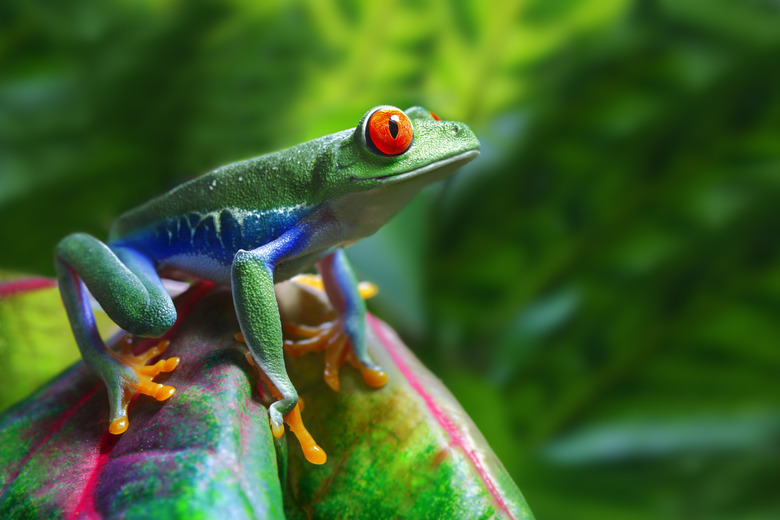What Does The Phylogenetic Tree Tell You About The Evolutionary Relationships Of Animals?
Phylogenetics is a branch of biology that studies the evolutionary relationships between organisms. Over the years, evidence supporting the connections and patterns between species has been gathered through morphologic and molecular genetic data. Evolutionary biologists compile this data into diagrams called phylogenetic trees, or cladograms, which visually represent how life is related, and presents a timeline for the evolutionary history of organisms.
A phylogenetic tree looks like a sequentially branching tree, starting with one common branch, then splitting into more branches which subsequently diverge even further into more branches. The tips of the branches represent present day taxa, or species. Working backwards, species that share a "node," or common branch, share an ancestor at that node. Therefore, the further back you go toward the main branch of the tree, the further back you move through evolutionary history. Conversely, any branches that originated from a common node are descendants of that species.
Understanding the Phylogenetic Tree
Understanding the Phylogenetic Tree
An evolutionary biologist creates a phylogenetic tree by comparing specific gene DNA sequences and morphological, or physical, traits within and between groups of organisms. As lineages evolve over time, inherited mutations result in diverging evolutionary paths, creating different groups of species, some more closely related than others.
Relationships Between Species
Relationships Between Species
Phylogenetic trees are extremely useful in depicting information about the evolutionary relationships between existing animals. They can answer questions like, "is a snake more closely related to a turtle, or a crocodile?" According to a phylogenetic tree of these species from the University of Mexico, snakes are closer to crocodiles, because their branches converge at a single node, indicating they share one common ancestor. However, a turtle's branch is two nodes away, two ancestors back. Phylogenetic trees also strongly contribute to the field of taxonomy, or the classification of current species. Probably the most familiar classification method used is based on the Linnaean system, assigning organisms to a kingdom, phylum, class, order, family, genus and species. This system is not evolution-based, so biologists are starting to use a phylogenetic classification system based on groups, or clades, represented by the phylogenetic trees.
Common Ancestry and Traits
Common Ancestry and Traits
A phylogenetic tree can help trace a species back through evolutionary history, down the branches of the tree, and locate their common ancestry along the way. Over time, a lineage may retain some of their ancestral features but will also be modified to adapt to the changing environment. Trees also identify the origin of certain traits, or when a certain trait in a group of organisms first appeared. The University of Mexico provides an example of the origin of traits relating to the whale. According to the phylogenetic tree, whales and their relatives (cetaceans) are closely related to a group that contains the cow and deer (artiodactyls), but only whales have a long torpedo-shaped body. Therefore it is concluded that that trait appeared on the branch after whales and artiodactyls diverged from their common ancestor. Phylogenetic trees also identified that birds are descendant of dinosaurs based upon certain common physical traits like their hip bones and skulls.
Cite This Article
MLA
Quinlan, Sarah. "What Does The Phylogenetic Tree Tell You About The Evolutionary Relationships Of Animals?" sciencing.com, https://www.sciencing.com/phylogenetic-tree-tell-evolutionary-relationships-animals-8589/. 11 October 2013.
APA
Quinlan, Sarah. (2013, October 11). What Does The Phylogenetic Tree Tell You About The Evolutionary Relationships Of Animals?. sciencing.com. Retrieved from https://www.sciencing.com/phylogenetic-tree-tell-evolutionary-relationships-animals-8589/
Chicago
Quinlan, Sarah. What Does The Phylogenetic Tree Tell You About The Evolutionary Relationships Of Animals? last modified August 30, 2022. https://www.sciencing.com/phylogenetic-tree-tell-evolutionary-relationships-animals-8589/
